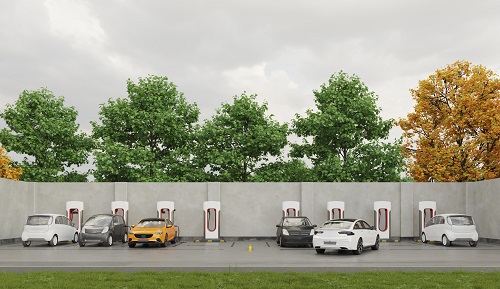As EV adoption accelerates, more homeowners are looking for convenient ways to charge their vehicles at home. But not all solutions are built for the long haul. At Santiban Services Group, we’ve seen the damage caused by outdated charging methods—especially the use of NEMA 14- 50 outlets.
Starting in 2024, our insurance provider no longer covers EV charging systems that rely on NEMA 14-50 outlets, even when premium products like Hubbell are used. Here’s why—and what you need to know to protect your home, your investment, and your family.
What’s the Real Problem with NEMA 14-50 Outlets?
NEMA 14-50 outlets were originally designed for stoves and RV parks—not continuous, high- amperage EV charging. They’re rated for 50 amps, but EVs demand 8–12 hours of continuous 40-amp loads, which pushes these outlets to their thermal limits.
Over time, even minor loosening of plug connections can cause:
- Heat buildup and melting
- Arcing that damages plugs and outlets
- Potential house fires
- Insurance claim denials
Even using high-end outlets like Hubbell doesn’t solve the problem—because the plug-and- play nature of NEMA outlets creates wear and tear by design. That’s why insurers— including ours—now classify these setups as uninsurable for EV applications.
Case Study: NEMA Failure in a “Pro Install”
One Houston customer had a NEMA 14-50 outlet installed with a Tesla mobile connector. The install included a heavy-duty Hubbell outlet and GFCI protection—but within 9 months, the plug overheated and scorched the faceplate. No immediate tripping. No visual warning. Just slow, silent damage.
When a fault finally occurred, the insurance company denied the claim due to the outlet’s use in a continuous EV charging context. The homeowner had to pay for repairs and equipment replacement out of pocket.
Why We Recommend Hardwired EV Chargers Instead
- We now exclusively recommend hardwired EVSE installations, like the Tesla Wall Connector.
Why? - No plug = no arc risk
- Built-in GFCI protection meets NEC 625.41
- Permitted and documented, qualifying for federal tax credits
- Cleaner, safer, more permanent solution
These installations are covered by our insurance provider, giving both you and us peace of mind.
The Tax Credit You Could Lose with NEMA
The Energy Efficient Home Improvement Credit (25C) and the Residential Clean Energy Credit (25D) offer up to 30% back on your EV charging installation. But to qualify, your installation must be:
- Permitted
- Documented
- Code-compliant
NEMA 14-50 installs often fail one or more of those tests—especially if installed without load
calculations or incorrect GFCI coordination.
Want to be sure? We handle permitting, engineering, and paperwork for every install.
Why Our Insurance Provider Drew the Line
Insurance companies are seeing a spike in claims from improperly installed or deteriorating NEMA EV outlets. Here’s why ours no longer insures them:
- Too many fire-related losses from outlet-based EV charging
- Increased claim denials tied to “non-dedicated EVSE” language
- Higher risk compared to hardwired, code-specific EVSE installations
As a result, Santiban can no longer offer these installations if the customer intends to use them for EV charging. It’s a matter of protecting your safety—and ours.
Conclusion: The Safer Road Is the Smarter One
Your EV is worth protecting—and so is your home. When you invest in an EV charger, don’t settle for outdated methods that could cost you more later.
- NEMA 14-50 = outdated, uninsurable, and risky
- Hardwired EVSE = tax-eligible, code-compliant, and covered by our insurance provider
Schedule your fully covered, hardwired EV charger install today


